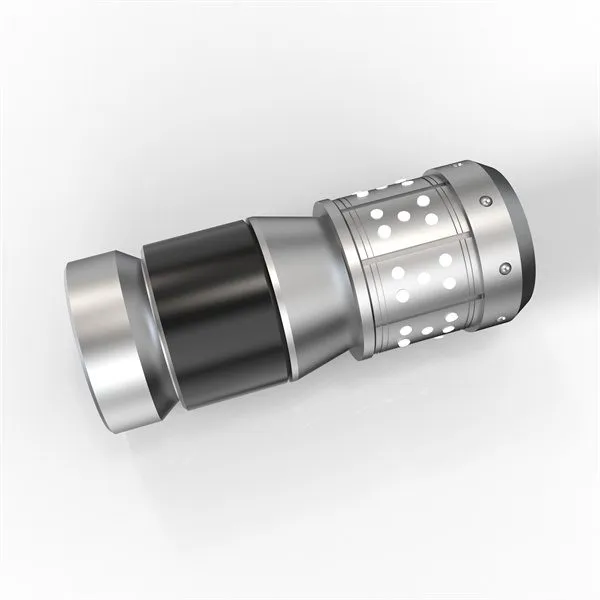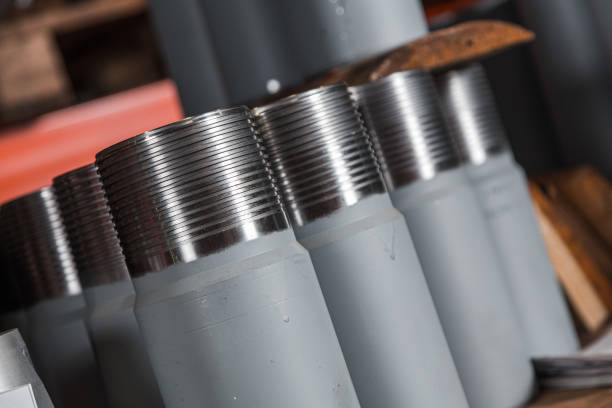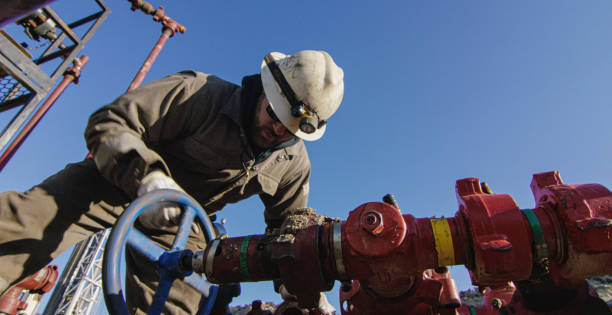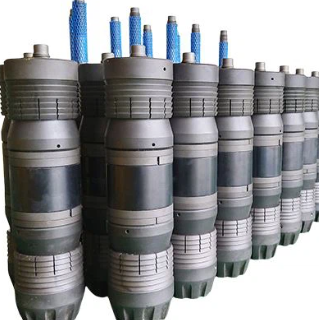Russian

Multiple Orifice Choke Valve
Multiple Orifice Choke Valve

In oil and gas production, chemical processes and energy systems, precise control of the flow of high-pressure differential fluids is a core process requirement. However, when the fluid experiences a huge pressure drop, it will cause a series of destructive problems: severe cavitation erodes the valve body, deafening noise pollutes the environment, and unpredictable flow fluctuations affect production stability. The Multiple Orifice Choke Valve is an engineering masterpiece born to solve these high-pressure differential challenges. It is not a simple flow limiter, but a savvy “energy ladder manager”. Through a unique multi-stage pressure reduction design, it can release the violent pressure smoothly, quietly and controllably, becoming the preferred solution under harsh working conditions.
Оборудование для нефтегазовой отрасли
The pain of high pressure difference: the fatal flaw of single-stage throttling
When traditional single-orifice plate or cage throttling valves work under high pressure difference (ΔP), the core problem they face is due to the physical nature:
- Destructive cavitation: When the fluid flows through a single-stage narrow channel, the pressure instantly drops below the saturated vapor pressure, forming steam bubbles. These bubbles instantly collapse in the downstream high-pressure area, generating extremely strong micro-jet shock waves (up to thousands of atmospheres), which continuously bombard the metal surface, causing the valve core, valve seat and valve body to be severely eroded, perforated, or even fail in a very short time.
- High noise: Severe turbulence, vortexes, and the collapse of cavitation bubbles will produce extremely high sound pressure levels (often exceeding 110 dB(A)), which seriously endanger the hearing health of on-site personnel, violate industrial noise regulations, and require expensive noise reduction measures.
- Erosion: The direct impact and wear of high-speed fluid (especially when containing solid particles) on the throttling edge and downstream surface.
- Unstable Flow Control: The complex interaction of cavitation and turbulence may cause flow pulsation, making it difficult to achieve precise and stable regulation.
- Vibration: Mechanical vibration caused by cavitation, turbulence and flow instability may damage the valve itself and the connected pipeline system.
Запчасти для нефтяных месторождений
The wisdom of multi-hole throttle valve: staged pressure reduction, breaking the whole into parts
The core innovation of the multi-hole throttle valve lies in its multi-stage, multi-hole (Multi-Stage, Multi-Path) throttling structure design. It abandons the single-point “hard-hitting” pressure reduction method and adopts a “step-by-step” strategy:
- Series pressure reduction ladder (Pressure Staging): The valve is designed with multiple throttling orifices or special flow channels arranged in series. The total pressure drop (ΔP_total) is decomposed into multiple smaller pressure drops (ΔP1, ΔP2, ΔP3…) and gradually realized at each orifice/flow channel level.
- Key principle: Control the pressure drop at each stage to avoid the critical point of cavitation:
The size and shape of each orifice are precisely calculated and designed to ensure that the pressure of the fluid is always higher than the saturated vapor pressure of the fluid when it flows through each stage.
In this way, the necessary condition for cavitation is fundamentally eliminated – the pressure is lower than the saturated vapor pressure. Without bubble formation, there is naturally no collapse and destruction. - Energy dissipation and turbulence management (Energy Dissipation & Turbulence Control):
The small pressure drop at each stage not only avoids cavitation, but also reduces the increment of fluid kinetic energy (velocity).
The multi-stage structure forces the fluid path to change direction or expand/contract multiple times, effectively breaking up the large vortex and converting it into countless small vortices.
This design significantly increases the internal friction and energy dissipation of the fluid, and evenly disperses the huge energy originally concentrated at a single point to multiple stages and longer flow paths for consumption.
Оборудование устья скважины
Significant advantages of porous throttle valves: silent, long-life, precise, reliable
- Completely eliminate or greatly suppress cavitation (Eliminates/Severely Suppresses Cavitation): This is its most core and revolutionary advantage. By controlling the pressure drop in stages, the pressure is always higher than the steam pressure, and the valve trim (orifice plate, valve core, valve seat, valve body) is protected from the destructive impact of cavitation micro-jets, and the life span is extended several times or even dozens of times. Maintenance costs and downtime are greatly reduced.
- Outstanding noise reduction performance (Outstanding Noise Reduction): Energy is dissipated in stages and smoothly, avoiding the high-intensity noise source generated by single-point violent turbulence and cavitation collapse. The porous design itself also has an acoustic damping effect. It can usually reduce noise by 20-40 dB(A) or more, easily meeting strict industrial noise standards (such as OSHA, NORSOK), significantly improving the working environment, and reducing hearing protection costs.
- Enhanced Erosion Resistance:
Eliminates cavitation (the main erosion accelerator).
Relatively low flow rate per stage (due to low pressure drop).
Optimized flow path design reduces direct impact angle.
Critical throttling surfaces are often welded or inlaid with superhard materials (such as tungsten carbide WC) to further resist wear from sand-containing fluids. - More stable and precise flow control:
Eliminates flow pulsation and vibration caused by cavitation.
Multi-stage designs generally provide more linear flow characteristics (Cv curves).
Allows precise and repeatable flow regulation over a wider range of flow and pressure differences, improving process stability. - Reduced Vibration & Extended System Life: Smooth flow and elimination of cavitation/violent turbulence significantly reduce vibration stress on the valve itself and connected pipes, protecting the entire downstream system.
- Wide Operating Range: It is more adaptable to inlet pressure fluctuations and flow changes, and can maintain good performance (low noise, no cavitation) under variable conditions.
- Lower Total Cost of Ownership (TCO): Although the initial investment may be higher than that of ordinary throttle valves, its ultra-long service life (reduced spare parts replacement), extremely low maintenance requirements, and avoidance of production suspension fines or modification costs caused by noise and cavitation make its long-term economic benefits extremely significant.
Choke Valve / (API 6A Choke Valve)
Application scenario: The ultimate answer to the challenge of high pressure difference
Multi-hole throttle valve is the first choice or the only feasible solution for the following harsh working conditions:
Oil and gas production:
High-pressure wellhead throttling (oil nozzle)
Production separator inlet pressure control
Anti-flying (anti-surge) control valve of gas compressor (need to handle large pressure difference)
High-pressure end control of water injection/gas injection system
High-pressure flare venting system
Refining and chemical industry:
High-pressure reactor inlet/outlet flow control
High-pressure difference pressure reduction system (such as from reaction pressure to separation pressure)
Steam temperature reduction and pressure reduction (especially high-pressure difference occasions)
Boiler feed water regulating valve
Key high-pressure difference process control point
Power (thermal power/nuclear power):
Main steam system bypass valve (high-pressure bypass HP Bypass)
Feedwater pump minimum flow recirculation valve (withstands high pressure difference between pump outlet and deaerator)
Other industries: Any severe throttling application with high ΔP, potential cavitation, high noise or solid particles.
Intelligent Evolution: The Future of Precision Control
Modern multi-orifice choke valves are incorporating intelligent elements:
Advanced Materials and Coatings: Continuously develop more wear-resistant and corrosion-resistant materials (such as new cemented carbides and ceramic composites) for orifice plates and flow channels.
Computational Fluid Dynamics (CFD) Optimized Design: Use CFD to accurately simulate and optimize multi-stage flow channels to maximize energy dissipation efficiency, achieve lower noise and better flow characteristics.
Condition Monitoring and Predictive Maintenance: Integrate pressure, temperature, vibration, and acoustic sensors to monitor valve performance in real time, evaluate orifice wear, and predict maintenance needs.
Digital Twin and Optimized Control: Combine process data with valve models to achieve more accurate flow prediction and adaptive control.
Conclusion: Silent and long-lasting choice for high-pressure differential control
Multiple Orifice Choke Valve represents the cutting-edge wisdom in the field of high-pressure differential fluid control. It successfully tamed turbulence and high pressure through a sophisticated “divide and conquer” strategy – multi-stage pressure reduction, multi-path energy consumption – and fundamentally solved the stubborn problems of cavitation damage, noise pollution and unstable flow. Its ultra-long life, quiet operation, precise control and excellent reliability make it an indispensable key equipment in demanding industrial applications. In today’s pursuit of safety, environmental protection, high efficiency and low maintenance costs, choosing a multi-hole throttle valve with optimized design and made of top-grade materials is not only a solution to technical problems, but also a strategic investment to optimize production efficiency and reduce long-term operating costs. It is the well-deserved “silent longevity champion” and “precision flow steward” in the world of high-pressure energy.
Say goodbye to cavitation erosion and noise troubles! Unlock the silent and long-life solution for high-pressure differential flow control. Explore high-performance multi-hole throttle valves, which use tungsten carbide reinforced orifice plates and graded pressure reduction design to significantly extend life and easily meet stringent noise standards. Contact us now to get customized selection and CFD optimization solutions to make your key processes quieter, more stable and more economical!







